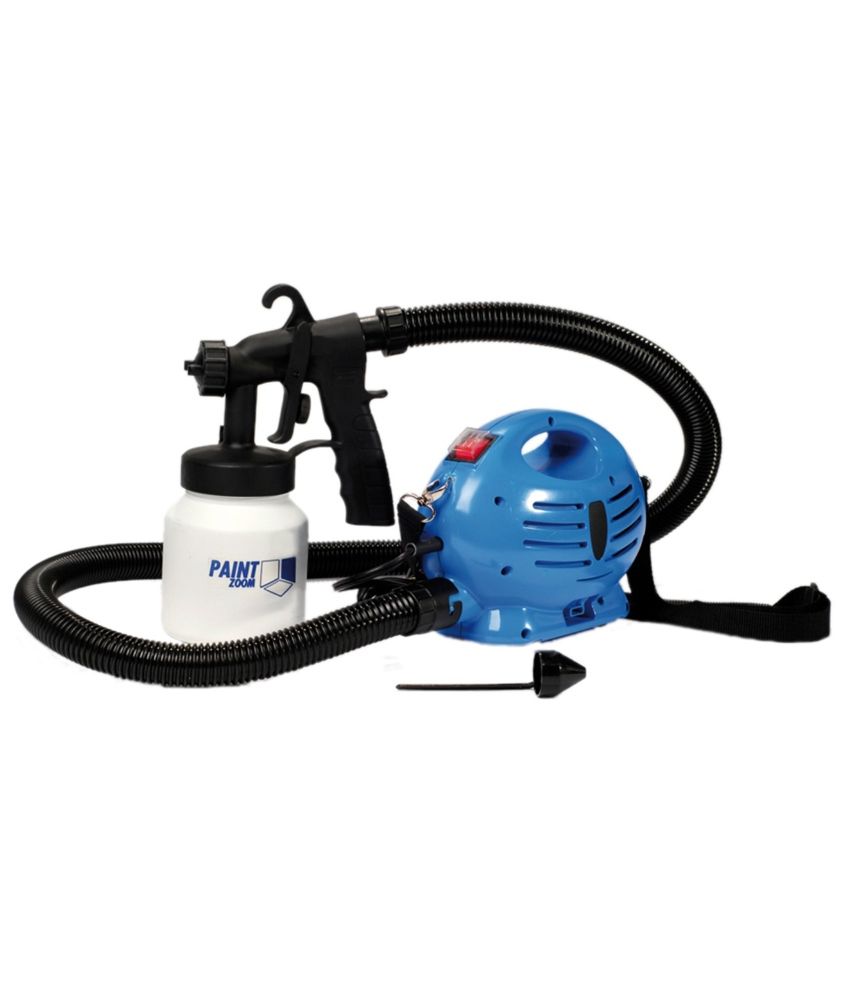

- Pro paint sprayer reviews portable#
- Pro paint sprayer reviews pro#
- Pro paint sprayer reviews professional#
Keep in mind that if you want to use a paint sprayer without buying one, you can rent a sprayer from a home improvement store.

Pro paint sprayer reviews professional#
For larger tasks, where you’ll be using 3 or more gallons of paint, an airless sprayer system may be a better fit-generally, professional painters use airless sprayers to quickly cover big surfaces, such as lots of rooms or spaces with vaulted ceilings, and to paint building exteriors. Wagner has a “high efficiency airless” sprayer, or HEA, with a much lower pressure that it claims will boost the amount of paint that sticks to a surface by 55 percent. They’re also safer should your hand come in contact with the tip.Ī few brands dominate: consumer-grade Wagner and prosumer and professional brands like Titan and Graco. HVLPs are also well suited to detail work, such as trim, cabinetry, furniture, and doors, because they add less velocity to the paint, making them easier for a homeowner to control. This uses less paint, provides a finer, buttery-smooth finish, and can make it easier to learn proper spraying technique. The larger HVLP systems have two parts, where a stationary compressor or turbine connects to the spray gun and paint reservoir with an air hose.Īs the name implies, HVLP sprayers tend to work at much lower pressure. Typically, the handheld models require a power cord and can spray up to 48 ounces (1.5 quarts) of paint at a time, which is held in a container attached above or below the gun. There are few battery-powered HVLP models on the market. While airless sprayers use a pump to build pressure, HVLP models (sold at Home Depot and Lowe’s) use a turbine motor, which pressurizes the paint container and also helps create a uniform, atomized spray. (Take care not to aim the sprayer at anyone, including yourself.) Handheld sprayers usually operate at about 1,500 pounds of pressure per square inch larger ones, at about 3,600 psi. All airless sprayers work the same way: A pump pulls the finish from a reservoir and forces it through the gun’s tip at high pressure, breaking it up into uniform droplets. The airless models (sold at Home Depot and Lowe’s) aimed at homeowners range from smaller handheld versions you preload with up to a quart of paint and run off a power cord or a rechargeable battery to large, plug-in electric sprayers on wheels, which siphon paint right out of a 1- or 5-gallon can.
Pro paint sprayer reviews portable#
And both come in a variety of sizes, from handheld portable to larger stationary machines.

Both types can handle a range of oil- and water-based finishes, from thinner stains to thick paint-and-primer-in-one. Our Ryobi and DeWalt picks just bump right up a set of stairs with minimal difficulty.There are myriad ways to spray paint, but the two options designed for homeowners are airless sprayers and high-volume, low-pressure sprayers, or HVLP. In fact, we had to fully lift it, which is awkward, given how the handle sits and where the center of gravity is. So moving the Greenworks around on a flat surface like a driveway or lawn is no problem, but getting it up a set of patio stairs or a curb is difficult. When the washer is in a vertical position, the handle is over the front of the washer and not the back. The downside is that the body of the Greenworks has the handle orientation of a wheelbarrow (our other picks are more like a two-wheeled dolly). The Greenworks has big wheels, and the GFCI brick is set back from the end of the cord. It comes with a wide selection of nozzle tips, the cord storage is excellent, and the hose is the floppiest we’ve tested.
Pro paint sprayer reviews pro#
If you’re working on a totally flat surface: In spring 2022, we tested the Greenworks Pro GWP2700 2700 PSI Cold Water Electric Pressure Washer, and in terms of cleaning power, it’s on a par with (or better than) our other picks.


 0 kommentar(er)
0 kommentar(er)
